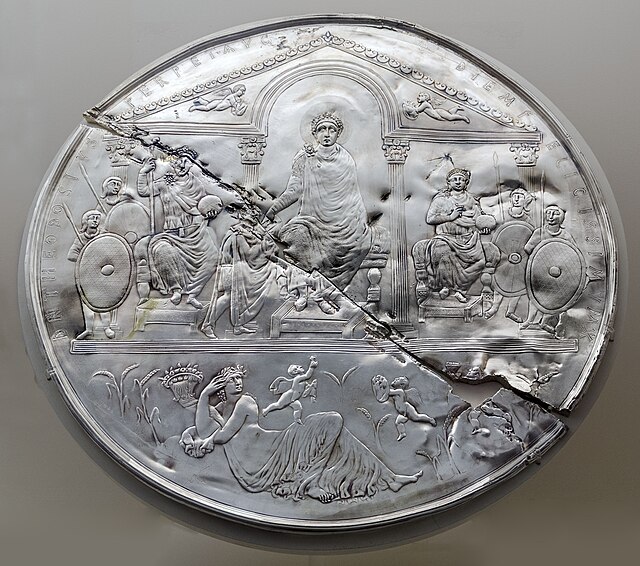Christianity as the Roman state religion
In the year before the Council of Constantinople in 381, the Trinitarian version of Christianity became the official religion of the Roman Empire when Emperor Theodosius I issued the Edict of Thessalonica in 380, which recognized the catholic orthodoxy of Nicene Christians as the Roman Empire's state religion. Historians refer to the Nicene church associated with emperors in a variety of ways: as the catholic church, the orthodox church, the imperial church, the imperial Roman church, or the Byzantine church, although some of those terms are also used for wider communions extending outside the Roman Empire. The Eastern Orthodox Church, Oriental Orthodoxy, and the Catholic Church all claim to stand in continuity from the Nicene church to which Theodosius granted recognition.
Monogramme of Christ (the Chi Rho) on a plaque of a sarcophagus, 4th-century AD, marble, Musei Vaticani, on display in a temporary exhibition at the Colosseum in Rome, Italy
Icon depicting Constantine and the bishops of the Council of Nicaea (325). The centrally placed and haloed Emperor holds the Creed of the First Council of Constantinople (381).
Missorium of Emperor Theodosius I, who declared Nicene Christianity to be the State religion of the Roman Empire. This piece was found in Almendralejo.
The Hagia Sophia basilica in Constantinople, for centuries the largest church building in the world.
The Roman Empire was the post-Republican state of ancient Rome. It is generally understood to mean the period and territory ruled by the Romans following Octavian's assumption of sole rule under the Principate in 27 BC. It included territories in Europe, North Africa, and Western Asia and was ruled by emperors. The fall of the Western Roman Empire in 476 AD conventionally marks the end of classical antiquity and the beginning of the Middle Ages.
Augustus of Prima Porta
Nerva (r. 96–98)
Trajan (r. 98–117)
Hadrian (r. 117–138)







